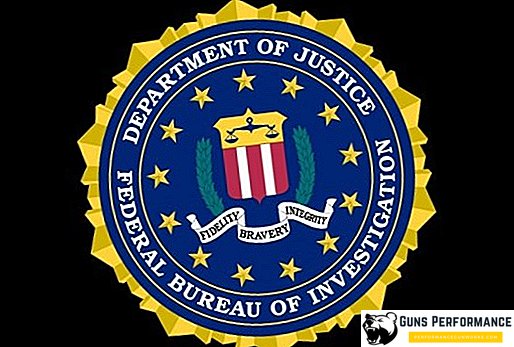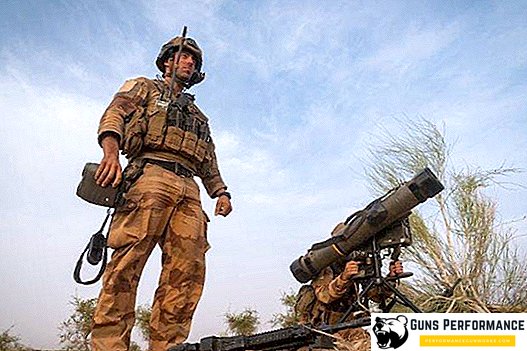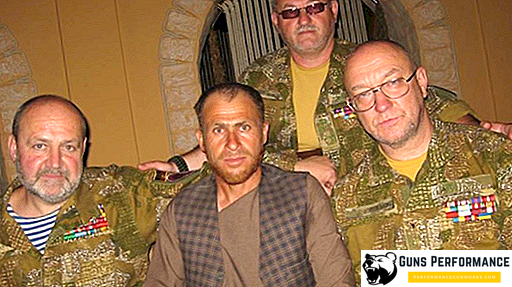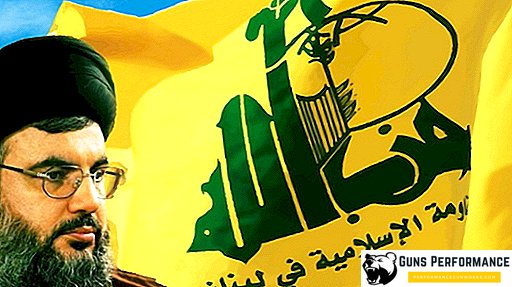What is known about the FBI? The Federal Bureau of Investigation is a division of the US Department of Justice and reports to its head, who is no other than the US Attorney General. The bureau has several functions, including counterintelligence, political police and criminal investigation. Because of this, the FBI is considered a unique intelligence service in the world.

Corresponding to its functions, the FBI deals with three areas:
- Provides national security;
- Provides internal security;
- Fights criminal elements.
Providing national security, the FBI functions as the main counter-intelligence service of the United States. Nevertheless, the FBI is not a monopolist in counterintelligence activities. This is done by other US intelligence agencies, including the CIA.
By ensuring internal security, the Bureau identifies the "internal enemies" of the state. These are individuals and organizations that set goals for overthrowing American power, are detrimental to state interests, and also violate the legal rights of citizens. Since 1936, the so-called internal intelligence has been taken to the FBI for this task. It collects data on extremist right and left organizations to determine the extent of their danger to the US political system and sets the measure of their relations with other states.
Since 1982, the FBI has become the main structure of anti-terrorism in the United States itself. And in 1984, the FBI investigates all the attacks in which American citizens abroad suffered.

American police are limited by their state borders. As a result, the Bureau plays the role of the federal police, while crimes that have been committed in several states are investigated. Moreover, there are up to 250 types of crimes that are considered "federal".
FBI structure
What is known about the FBI structure? From the available open sources, you can accurately describe it.
The head of the FBI, who is its director, is appointed to this post by the US president, and the Senate is approved. Record time in this position belongs to Edgar Hoover - 48 years. It is unlikely that anyone will surpass him, because now his tenure in this post is limited to a ten-year period.
The head of the FBI has only one deputy, who performs the duties of the boss in cases of his absence, and also assists him in the everyday activities of all services (except those who have direct subordination to the chief). In addition, the Bureau’s top management has fourteen FBI head assistants: eleven of whom are heads of FBI departments, and the three remaining are heads of the largest Washington, New York and Los Angeles offices in the country.
Another important body in the FBI is an executive conference convened once a month. At its meetings, the most pressing problems are solved.

The main building of the FBI is headquartered in Washington. Even in the United States there are regional (in literal translation - "field") offices in the amount of 56 units (including the Puerto Rico office), as well as up to 400 offices of the FBI. So, in the largest branch in New York, there are up to 2,000 personnel, of whom 1,100 are special agents. 24 American cities have special units to combat organized crime.
Structural divisions of the FBI
The structure of the FBI consists of 11 offices:
Inspection Office
Is directly subordinate to the director of the FBI. Supervises all structures of the department. Checks the legality, discipline, instructions and professional suitability of staff. Leads and internal investigations.
Counter Terrorism Office
It consists of two operational units. One deals with affairs related to international, and the other with domestic terrorist organizations. In addition, the management includes:
National home security department
Something similar to Civil Defense. Coordinates all efforts of federal services, state services, local authorities in preparing for the protection of the population from weapons of mass destruction.
National Center for Infrastructure Protection
It investigates everything connected with computer crimes.
Department of National Security
Until 1994, it was called counterintelligence directorate. He is responsible for coordinating investigations, for countering foreign intelligence services, as well as for internal security in the FBI. Consists of four main divisions.
Three departments are involved in organizing and coordinating activities in the United States related to the “development” of foreign institutions, namely, their staff for disclosing residents and individuals of American origin and foreigners who may be suspected of having contacts with foreign intelligence.

The fourth coordinates counterintelligence, police, CIA and other US government departments, as well as contacts with special services and police bodies of other states. The department has at its disposal a special section that directs the actions of the FBI in US embassy offices around the world. Counterintelligence activities outside the state FBI, as a rule, coordinates with the CIA.
Criminal Investigation Office
Investigates criminal offenses that US law relates to federal. This mainly concerns especially dangerous crimes against civilians committed with aggravating circumstances: robbery, crimes involving air, sea and rail transport, fraud or extortion using state documentation, seals, etc., as well as violations of laws related to acquisition, storage and use of all types of weapons.
Another group includes the investigation of offenses with the so-called "white-collar crime." There is also a department for combating organized crime.
Division of Investigative Services
Coordinates actions in all structures of the FBI, as well as in its international activities. The management has an emergency response team to coordinate activities in crisis situations that are primarily associated with terrorist attacks.
Office of Criminal Information Services
Centrally doing what collects and stores all information about criminal offenses that come not only from field agents of the FBI, but also from the local police, as well as from other agencies, federal and local subordination. The office has collected dossiers, as well as a centralized fingerprint database.
Information Service
This unit deals with information systems at the FBI. It provides the centralization of the collection, processing and use of the necessary information, as well as the necessary technical infrastructure for their smooth operation.

Admin service management
Until 1999, it was called personnel management. He is engaged in the selection and placement of personnel, recruiting new agents, etc. It also has a department of special checks. One of its main tasks is to check persons who are proposed for appointment to high positions of the White House, the US Congress, the Ministry of Justice and the Federal Bureau of Investigations itself, as well as issues of admission to state secrets.
In addition, the management is engaged in medical care, social insurance and pension provision of ex-FBI agents, as well as their safety.
Financial
Engaged in the control of financial activities of the FBI.
Laboratory
In 2000, in Quantico at the location of the Academy of the Federal Bureau of Investigation, a new laboratory was built instead of the old one, which was located in the building of the FBI headquarters. The newest laboratory is one of the largest on the planet. It was equipped with the best and most advanced forensic equipment.
Training
Located in Virginia, in the same Quantico, where the FBI Academy is located. In addition to the leadership of the Academy itself, the Directorate is responsible for the management of all training programs in the Bureau.
Departments of the Federal Bureau of Investigation
In addition to offices, in the structures of the FBI are the departments:
General Counsel
Has direct submission to the head of the FBI. This is the legal adviser to the head and other management of the Bureau. Supervises the compliance of staff with functional duties and FBI instructions.

Professional responsibility
Investigates crimes and serious offenses committed by FBI personnel. Also, here decisions are made on the facts of disciplinary violations revealed during the investigative measures. Interacts closely with the inspection department.
Equal Empowerment
Supervises that when enrolling in the service of the FBI and moving up the career ladder does not reveal the facts of any kind of discrimination. For example, such as racial, religious, ethnic, gender, age and sexual discrimination.
Public Relations and Congress
Engaged in interaction with legislators, the media, as well as public figures and organizations.
FBI history
The direct predecessor of the FBI was formed in July 1908 by the US President Roosevelt Bureau of Investigation. In the spring of the same year, Prosecutor General Charles Bonaparte, who was the grandson of the younger brother of Napoleon Bonaparte and the president’s old acquaintances, made a proposal for organizing a specialized criminal and political intelligence structure in the Ministry of Justice. Initially, this idea was not greeted by American legislators with enthusiasm. Characteristically, the order of the Prosecutor General on the formation of the BR, was given explicitly with presidential approval, and dated July 1, 1908, before approval by Congress.

In addition to dealing with pure crime, “special agents” - as the BR employees were called at that time - were engaged in a relatively small number of economic crimes, for example, with economic fraud. After a few years, the number of employees of the BR increased to three hundred special agents, plus up to three hundred people who were auxiliary servants. Further, the Bureau was engaged in opening its branches in large cities and in the area of the Mexican border. Thus, it assumed the role of police coordinator in each state.
Until 1935, the Bureau was renamed several times until it acquired a modern name, then the whole world heard about the FBI. The first and most famous chapter, which was the previously mentioned Edgar Hoover.
During the "criminal wars" in the 1930s, FBI agents arrested or shot criminals known for robbery, kidnapping and murder throughout the state. Thanks to these effective special operations, the FBI gave a solid battle to the overwhelming criminals, who especially raised their heads in the period when there was the so-called “Great Depression”. The FBI also played a major role in reducing the credibility that the Ku Klux Klan had at the time. The Scientific Detective Forensic Lab, called the FBI Lab, was solemnly opened in 1932, which was considered a significant achievement by Hoover.
In the years 1940-1970, the Bureau investigated espionage activities against the United States and allied states, and during the Second World War, eight German saboteurs were arrested who were preparing sabotage operations.
In 1971, the secret program of the FBI, COINTELPRO, which had operated since 1956, was made public. Then the special agents conducted illegal provocations against a number of American public organizations.

In 1983, the FBI created the National Hostage Rescue Group. It was the formation of a special unit, which was engaged in conducting special operations in the release of hostages.
The largest FBI operation in terms of the number of special agents involved was the one in which Puerto Rican police were arrested in the fall of 2010. They were suspected of corruption and support for the drug trade. At the time of this operation, approximately one hundred thirty police officers were arrested, and about a thousand FBI special agents took part in the operation itself.












